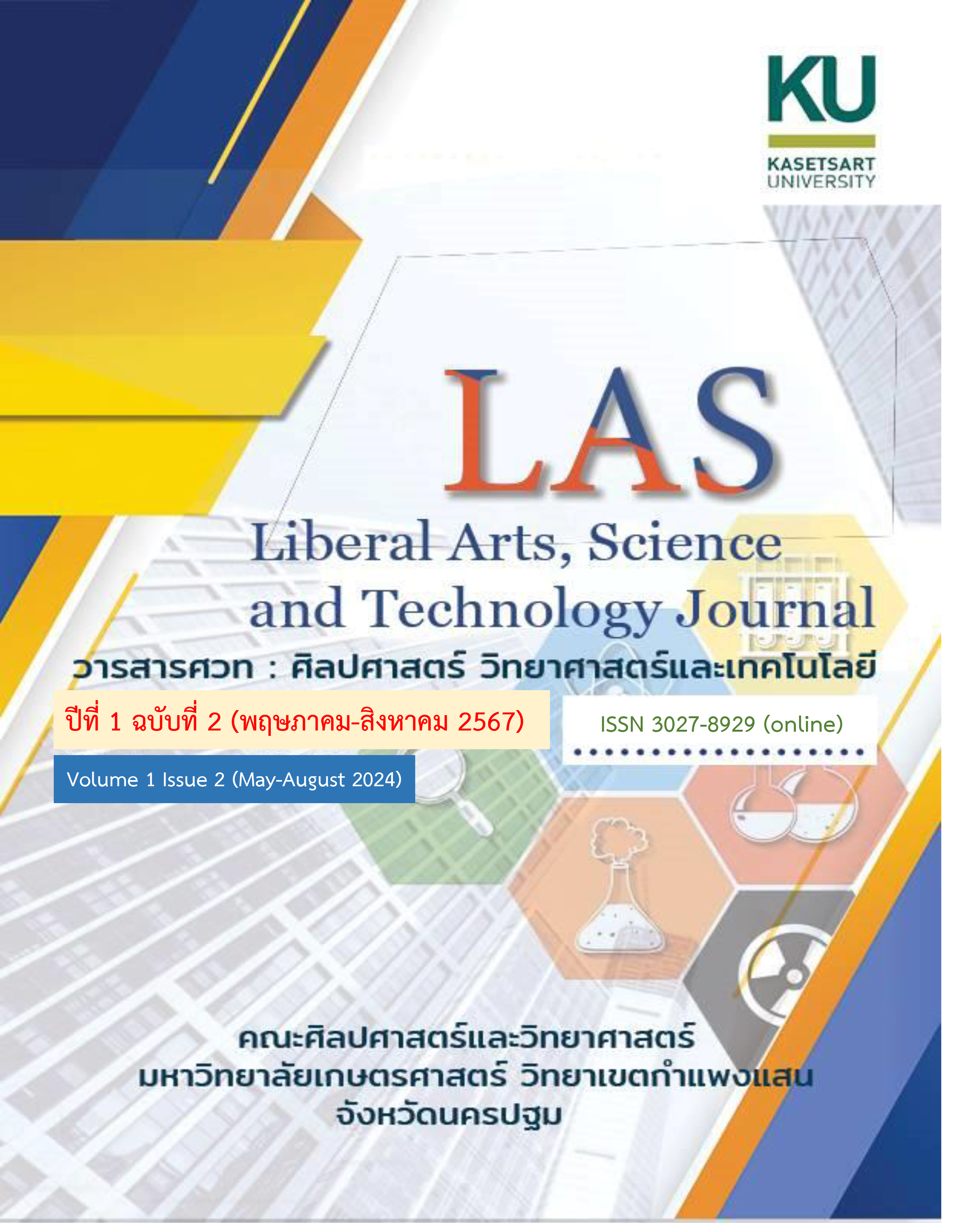การบริหารจัดการเพื่อรับมือกับภัยคุกคามความมั่นคงของประเทศไทยในยุคดิสรัปชั่น
Keywords:
Management, Threats, Security, DisruptionAbstract
The conducted the analysis it was found that challenges facing today's threats affect not only government and academia but also individuals and communities around the world. If we look deeper, we will find that the main reasons and mechanisms of security problems come from developments in various fields, of human society Especially the development and changes in technology that are changing rapidly nowadays. Because technology is a tool of development and change that plays a key role in creating an inextricably interconnected political, social and economic landscape. As a result, responsible agencies must continually face complexity and confusion. Therefore, coordination between agencies Creating understanding in society Policy and legal development And creating safe public spaces plays an important role in creating sustainable security, and help responsible agencies to respond effectively and sustainably. By coordination and combination between various agencies. To create stability in all dimensions of society and the economy in the present era.
References
ชนกพร ทองตากรณ์. (2565). ความสัมพันธ์ระหว่างกัมพูชากับจีนภายใต้กรอบ BRI และผลกระทบต่อความมั่นคงของภูมิภาคเอเชียตะวันออกเฉียงใต้. วารสารศรีนครินทรวิโรฒวิจัยและพัฒนา (สาขามนุษยศาสตร์และสังคมศาสตร์), 14(28), 14-27.
วชิรวัชร งามละม่อม. (2567). การบริหารความเสี่ยงในภาวะวิกฤตศึกษากรณีการบริหารสถานการณ์แพร่ระบาดของโรคติดเชื้อไวรัสโคโรนา 2019 (COVID-19) ของรัฐบาลช่วงปี พ.ศ. 2563-2564 ในพื้นที่จังหวัดราชบุรี. วารสารวิจัยวิชาการ The Journal of Research and Academics, 7(2), 233–250.
ศูนย์ศึกษายุทธศาสตร์ สถาบันวิชาการป้องกันประเทศ. (2563). แผนปฏิบัติการการปกป้องอธิปไตยและผลประโยชน์ของชาติของคนรุ่นใหม่ต่อยุทธศาสตร์ชาติ (พ.ศ.2563 - 2570). ศูนย์ศึกษายุทธศาสตร์ สถาบันวิชาการป้องกันประเทศ.
สำนักงานสภาความมั่นคงแห่งชาติ. (2561). คู่มือการจัดการภัยธรรมชาติ: แนวทางการจัดทำแผนฉุกเฉินและความพร้อม. สำนักงานสภาความมั่นคงแห่งชาติ.
Aldunce, P., Beilin, R., Handmer, J., & Howden, M. (2018). The social dimensions of bushfire risk and vulnerability in Tasmania, Australia. Regional Environmental Change, 18(5), 1463-1476.
Atkinson, G., Dietz, S., Neumayer, E., & Agarwala, M. (2012). Handbook of sustainable development. Edward Elgar Publishing.
Avaen, T., & Thekdi, S. (2020). Enterprise Risk Management Advance on its Foundation and practice. Routledge.
Baylis, J., Smith, S., & Owens, P. (Eds.). (2017). The globalization of world politics: An introduction to international relations. Oxford University Press.
Buzan, B., & Hansen, L. (2009). The evolution of international security studies. Cambridge University Press.
Buzan, B., Wæver, O., & Wilde, J. D. (1998). Security: A new framework for analysis. Lynne Rienner Publishers.
Chesbrough, H. W. (2003). Open Innovation: The New Imperative for Creating and Profiting from Technology. Harvard Business Review Press.
Christensen, C. M. (1997). The Innovator's Dilemma: When New Technologies Cause Great Firms to Fail. Harvard Business Review Press.
Djalante, R., Shaw, R., & DeWit, A. (Eds.). (2020). Building Resilience to Natural Disasters in Indonesia: Lessons Learned from the 2018 Palu Earthquake and Tsunami. Springer Nature.
Hillson, D., & Murray-Webster, R. (2017). Understanding and managing risk attitude. Routledge.
Kaplan, S., & Garrick, B. J. (1981). On the quantitative definition of risk. Risk Analysis, 1(1), 11-27.
Manyena, S. B. (2006). The concept of resilience revisited. Disasters, 30(4), 434-450.
Meadows, D. H., Meadows, D. L., Randers, J., & Behrens III, W. W. (1972). The limits to growth. Universe Books.
National Security Council of Thailand. (2021). National Security Strategy. National Security Council of Thailand.
Norris, F. H., Stevens, S. P., Pfefferbaum, B., Wyche, K. F., & Pfefferbaum, R. L. (2008). Community resilience as a metaphor, theory, set of capacities, and strategy for disaster readiness. American Journal of Community Psychology, 41(1-2), 127-150.
Porter, M. E., & Heppelmann, J. E. (2014). How smart, connected products are transforming competition. Harvard Business Review, 92(11), 64-88.
Pritchard, C. L., & PMP, P. G. (2014). Risk management: Concepts and guidance. Auerbach Publications CRC Press.
Sachs, J. D. (2015). The age of sustainable development. Columbia University Press.
Schwab, K. (2017). The Fourth Industrial Revolution. Geneva Crown Business.
Sithipolvanichgul, J. (2018). The determinant of Enterprise Risk Management Implementation: Evidence in Thailand and Malaysia. Thammasat Review, 21(1), 1-25.
The United Nations Office for Disaster Risk Reduction (UNISDR). (2015). The Sendai Framework for Disaster Risk Reduction 2015-2030. The United Nations Office for Disaster Risk Reduction (UNISDR).
United Nations Office for Disaster Risk Reduction. (2015). Sendai Framework for Disaster Risk Reduction 2015-2030. United Nations Office for Disaster Risk Reduction (UNDRR).
Wisner, B., Gaillard, J. C., & Kelman, I. (2012). Handbook of Hazards and Disaster Risk Reduction. Routledge.
World Commission on Environment and Development. (1987). Our common future. Oxford University Press.
Downloads
Published
How to Cite
Issue
Section
Categories
License
Copyright (c) 2024 ศวท : ศิลปศาสตร์ วิทยาศาสตร์และเทคโนโลยี

This work is licensed under a Creative Commons Attribution-NonCommercial-NoDerivatives 4.0 International License.







